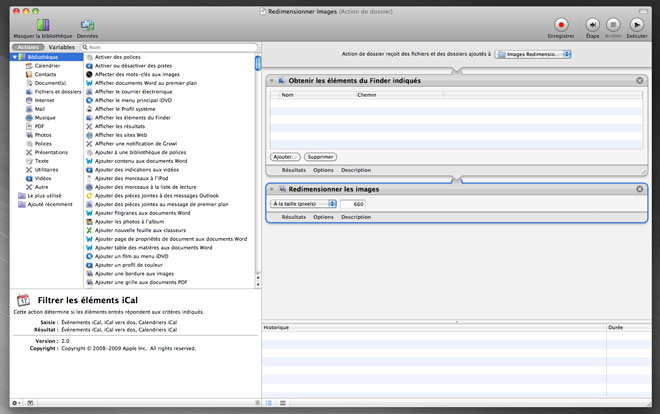

Please follow me on Twitter, or join me in the AppleHolic’s bar & grill and Apple Discussions groups on MeWe.

There are two quick ways to use this Automator application: Save the Automator app with a relevant name, eg EssentialMorningWebsites.
#Automator macos mac
#Automator macos mac os x
This tutorial demonstrates a neat hack for the Automator Mac OS X application. The Automator workflow applet is a versitile format for delivering portable functionality. The name you provide here will appear in the Quick Actions menu. Grabbing things off the Internet is common procedure for most internauts. For example, Photo.jpg will produce a resized file named Photo-650.jpg. The files will have -650 added to the end of their name. For example, you could select “Add Text” and enter “-650” here. When entering a number of pixels here, the size is the “length in pixels for the longer size of the image.” You can also enter a percentage.įor Rename Finder Items, configure how the files are renamed. Consequentially, the workflow settings banner contains controls for assigning an icon and color to the workflow that is used in its display in the those.

You’d choose “To Size (pixels)” and enter “650” in the box under Scale Images. Beginning in macOS Mojave (v10.14) Automator Quick Actions (service workflows) have the option to be displayed and accessed from a Finder window’s Preview pane, and/or the Macbook Touch Bar. Let’s say you want to resize images to 650 pixels wide. In the Scale Images section, enter the final size for your images. Go to Finder and right click and you shall find the option in the context menu to launch the input (the selected file) as root / superuser. The action will save them to your desktop by default, but you can choose any other folder. Save workflow - suggested name 'Open in Sublime Text (as root) Open System Preferences > Keyboard > Services and verify that the script appears and is checked off. Under Copy Finder Items, choose where you want to copy the files. Instead, we’ll have the workflow create a new copy of each photo, and then resize that copy. You’ll then configure those actions, and then save your workflow.įor example, we’ll create a Quick Action that resizes images to a specific size to demonstrate this process. We don’t want to resize the originals. You will use the library pane at the left side of the window to add one or more actions to the workflow on the right side of your window. If you haven’t used Automator yet, it’s still pretty simple. If you’ve used Automator before, this process should be familiar. Click “Choose” to create your new workflow. Select “Contextual Workflow” to create a Quick action. RELATED: Everything New in macOS 10.14 Mojave, Available Now You can also navigate to Finder > Applications > Automator.

To launch it with Spotlight search, press Command+Space, type “Automator,” and then press Enter. Open the Automator application included with your Mac to get started. Launch Finder and Create a Contextual Workflow


 0 kommentar(er)
0 kommentar(er)
